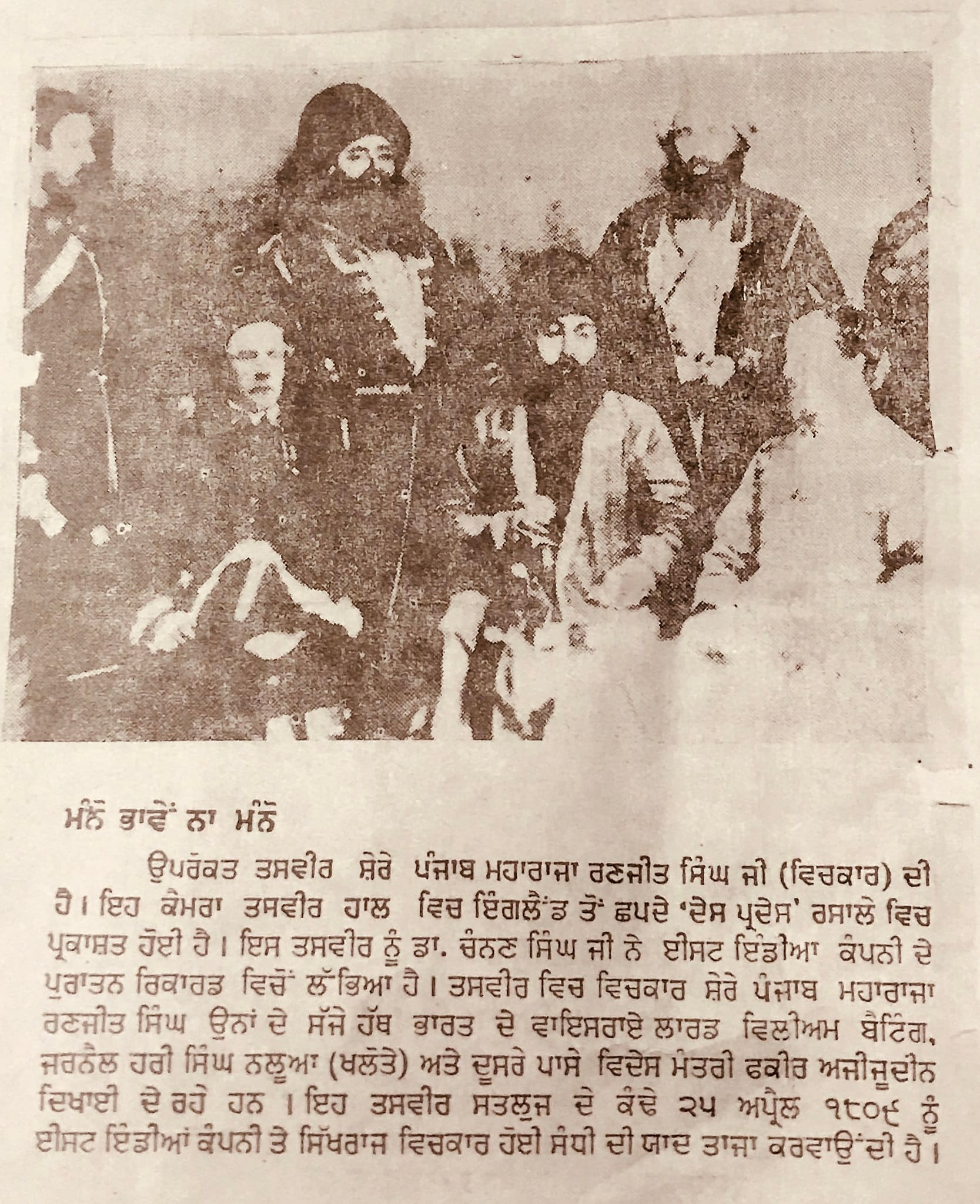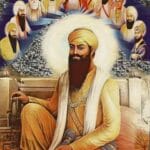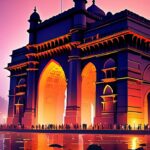Get ready to embark on a captivating journey through the extraordinary life of Hari Singh Nalwa, a warrior so courageous and fierce that he earned the epithet “The Lion of the Punjab.” Delve into his epic saga and uncover his pivotal role in shaping India’s history. Through strategic brilliance on the battlefield, diplomatic acumen, and unwavering loyalty, Nalwa’s legacy continues to inspire generations even today. Let’s step back in time and unravel the captivating tale of this Sikh icon.
History of Hari Singh Nalwa
Hari Singh Nalwa, a name etched in the annals of Sikh history, was not born a legend but forged into one through extraordinary deeds and unwavering commitment. Born at a time of significant transformation in the Indian subcontinent, his life unfolds like an epic tale. This is the story of the man who became known as “Baghmar,” the “Tiger-Killer,” and how his unwavering courage and strategic genius helped shape the destiny of the Sikh Empire.
From Humble Beginnings to the Battlefield
While details of Nalwa’s early life remain shrouded in the mists of time, historical records indicate that he enlisted in the Sikh Khalsa Fauj, the formidable army of the Sikh Empire, in 1804. Picture, if you will, a young man, barely out of his teenage years, stepping onto the training grounds, ready to dedicate his life to a cause greater than himself.
His exceptional bravery quickly caught the attention of his peers and superiors alike. Legend has it that he confronted a ferocious tiger, armed with nothing but a dagger and a shield, and emerged victorious. This act of almost superhuman courage earned him the moniker “Baghmar,” striking both awe and fear into the hearts of his adversaries.
Expanding the Empire, One Conquest at a Time
Nalwa’s rise through the ranks was nothing short of meteoric. He proved himself not only as a fearless warrior but also as a brilliant military strategist. Under his leadership, the Sikh armies secured victory after victory, each conquest adding another jewel to the crown of the burgeoning Sikh Empire. Kasur, Sialkot, Attock, Multan—these were just a few of the territories that fell before his strategic brilliance.
Imagine the scene: Nalwa, astride his warhorse, surveying the battlefield with a keen eye, his mind a whirlwind of tactical maneuvers. His dedication to the Sikh cause was absolute, and his soldiers fought with the fervor of true believers, inspired by their leader’s unwavering resolve.
Nalwa’s conquests were not merely about brute force; they were meticulously planned campaigns that showcased his deep understanding of both warfare and the intricate political landscape. He wasn’t simply conquering land; he was expanding the Sikh Empire’s sphere of influence, pushing its borders westward towards the formidable Khyber Pass, a gateway to Afghanistan.
Beyond the Battlefield: A Leader in Peace as in War
Nalwa’s leadership transcended the battlefield. He understood that a true leader needs more than just military strength. He served as the Diwan, a high-ranking administrative position, in Kashmir, Hazara, and Peshawar, demonstrating the same dedication to excellence that he displayed on the battlefield.
He implemented a series of administrative reforms, strengthened the existing infrastructure, and even established a mint in Kashmir, a strategic move that contributed significantly to the empire’s economic stability. It’s evident that he possessed a keen understanding of statecraft, recognizing that a strong empire needed a solid economic foundation and efficient administration.
A Legacy Forged in Courage and Dedication
Tragically, Hari Singh Nalwa’s life was cut short in 1837 during a fierce battle in Jamrud. However, his legacy continues to resonate throughout Sikh history and beyond. He is remembered as the embodiment of the Sikh spirit: courageous, dedicated, and unwavering in the face of adversity.
Nalwa’s story serves as a powerful reminder that true greatness can emerge from humble beginnings, that courage can achieve extraordinary things, and that true leadership requires not just strength and strategic thinking but also wisdom, compassion, and a deep understanding of the human spirit. While the Sikh Empire may be a thing of the past, Nalwa’s legend lives on, a testament to the enduring power of the human spirit to strive for excellence and dedicate oneself to a cause greater than oneself.
Why Was Hari Singh Nalwa So Feared?
We’ve explored the remarkable life and achievements of Hari Singh Nalwa, but what exactly was it about him that struck fear into the hearts of his enemies? Imagine being an Afghan soldier stationed at the edge of the Sikh Empire, hearing whispers carried by the wind of “Baghmar” approaching – that nickname alone, earned for allegedly killing a tiger in single combat with nothing but a dagger and a shield, would send shivers down your spine. This wasn’t just a man, it was whispered, but a force of nature.
His fearsome reputation was not unfounded. Nalwa was a brilliant military strategist, leading the Sikh armies to a series of decisive victories and conquering territories with an efficiency that bordered on the supernatural. However, his success wasn’t solely due to brute force. Nalwa was a master of psychological warfare, utilizing his formidable image to make his enemies reconsider engaging in conflict with the Sikh Empire.
Now, envision yourself as an Afghan warlord, harboring ambitions of expanding your territory into Punjab. Standing in your path is Peshawar, transformed by Governor Nalwa into an impenetrable fortress. Jamrud? Fortified. Khyber Pass? Locked down tight. Nalwa’s enemies weren’t just facing an army; they were facing an unyielding wall of determination, a testament to his strategic genius and the loyalty he inspired in his troops.
His soldiers revered him, the Sikh faith empowered him, and his enemies? Well, they likely wished they never heard his name whispered on the wind. Nalwa wasn’t merely a great general; he was a symbol of Sikh strength, courage, and unwavering resolve, his legacy continuing to inspire generations.
Consider these key points:
- The “Tiger-Killer”: This moniker, earned through a legendary encounter, speaks volumes about the image Nalwa projected and the fear he instilled.
- More than Muscle: While a fierce warrior, Nalwa’s strategic brilliance and mastery of psychological warfare were equally instrumental to his victories.
- Guardian of the Frontier: Nalwa didn’t merely conquer Peshawar; he transformed it into a bastion of Sikh strength, sending a clear message about the sanctity of the empire’s borders.
- Beyond the Battlefield: Nalwa’s impact extended far beyond military campaigns. He became a legend, a symbol of Sikh resistance and enduring courage.
Eager to delve deeper? A wealth of fascinating history awaits those interested in Hari Singh Nalwa and the Sikh Empire. Don’t just take our word for it – embark on your own journey of discovery!
Who Is the Most Feared Warrior in Afghanistan?
Crowing the absolute “most feared” warrior in a land with a history as rich and tumultuous as Afghanistan is no easy feat. It’s akin to selecting the highest peak in a mountain range teeming with towering summits! However, one name echoes loudly through the corridors of time and consistently surfaces in discussions about legendary warriors: Hari Singh Nalwa.
Known as the “Lion of the Punjab,” Hari Singh Nalwa was a Sikh general whose courage became the stuff of legends. We’re talking about a figure who earned the moniker “Baghmar” – tiger-killer – for allegedly slaying a tiger that attacked his troops. This wasn’t just a one-off event; it spoke to the core of his being. Hari Singh Nalwa was instrumental in expanding the Sikh Empire, and he became renowned for staring down Afghan armies that posed a threat to his people. He was a bulwark against invasion, a shield protecting the Sikh Empire from constant threats.
Imagine being an Afghan warlord, your ears filled with whispers carried on the wind: Hari Singh Nalwa is on the other side of the Khyber Pass. It’s highly probable you’d hesitate, reconsidering your invasion plans. That’s the kind of fear his name evoked. He wasn’t just a skilled fighter; he was a brilliant military strategist and a master of logistics. As the governor of Peshawar, he effectively erected a wall of defense around the Khyber Pass, effectively shutting down the most direct route between Afghanistan and the Punjab region.
Even today, stories about Hari Singh Nalwa are told and retold around campfires and in hushed tones within the walls of homes. He’s remembered not merely for his incredible bravery but also for his unwavering dedication to his beliefs and his people. This powerful combination of strength, skill, strategic thinking, and unwavering faith cemented his place as a true legend in Sikh history – a figure who sent shivers down the spines of those who dared to challenge him on the battlefield.
It’s crucial to remember that history is replete with remarkable figures, and attempting to definitively crown a single “most feared” is similar to trying to capture lightning in a bottle. However, there’s no doubt that Hari Singh Nalwa’s name belongs in the conversation. He embodied the indomitable spirit of a warrior who not only fought with unmatched bravery but also inspired others to stand their ground, to defend their beliefs, even when faced with overwhelming odds.
What Happened to Hari Singh Nalwa’s Family After His Death?
Hari Singh Nalwa, the legendary “Tiger-Killer,” wasn’t just a fierce warrior; he was a respected leader who played a pivotal role in shaping the Sikh Empire. We know he accomplished incredible things, but what became of his family after his tragic death at the Battle of Jamrud in 1837?
Sadly, their story takes a tragic turn. The British, always looking for an opportunity to expand their sphere of influence, saw Nalwa’s death as a chance to weaken the Sikh Empire. They seized the Nalwa family’s lands, plunging them into poverty – a cruel twist of fate for a family that had once enjoyed a position of power and influence.
Imagine being Jawahir Singh and Arjan Singh, Nalwa’s sons, witnessing this injustice firsthand. Despite the hardships they faced, these young men refused to back down. They inherited their father’s fighting spirit, standing firm against the encroaching British forces. Jawahir Singh, in particular, would go on to play a key role in defending the Sikh Kingdom during the Battle of Chillianwala, proving that his father’s courage and determination lived on in his blood.
It’s important to remember that Hari Singh Nalwa was more than just a military leader; he was a skilled administrator who understood the importance of building a strong and prosperous society. During his time as Governor of Kashmir, Peshawar, and Hazara, he demonstrated a keen understanding of economic principles, even going so far as to establish mints in Kashmir and Peshawar to help stabilize the region’s economy. He also founded the fortified city of Haripur, a testament to his vision for a secure and prosperous future. These actions reveal a leader who was not content to rest on his laurels but was constantly striving to improve the lives of those under his care.
Though Hari Singh Nalwa’s life was cut tragically short, his impact on Sikh history, and especially on his family, is undeniable. He is remembered as the fearless “Tiger-Killer” whose bravery continues to inspire. His sons’ resistance against British rule reflects the values of courage and resilience he instilled in them. History remembers Hari Singh Nalwa as a man of action, both on the battlefield and in the administrative roles he held. His story, and that of his family, reminds us that even in the face of unimaginable adversity, the fight for freedom, justice, and one’s beliefs continues.
What Was the Fear of Hari Singh Nalwa?
We’ve discussed Hari Singh Nalwa’s prowess on the battlefield, but his reputation extended far beyond simply being a skilled warrior. Imagine, if you will, being an Afghan soldier stationed on the frontier, the wind carrying whispers of Nalwa’s name – it’s likely that a chill would run down your spine. Why? Because this man wasn’t just strong and skilled, he was relentless. He was a force of nature, always pushing forward, always striving for the next victory in the name of the Sikh Empire.
One story that encapsulates the fear he instilled is how Nalwa earned the nickname “Baghmar,” meaning “tiger-killer.” Picture this: Nalwa, on a hunt, comes face-to-face with a Bengal tiger in all its ferocious glory. Most people would panic, their blood running cold. Not Nalwa. He draws his sword and engages the tiger in a fight to the death, eventually emerging victorious. Whether this story is entirely factual or embellished through retellings, it paints a vivid picture of the kind of warrior people believed him to be.
Nalwa’s consistent victories against the Afghans only served to bolster his image of invincibility. He conquered cities like Kasur, Attock, and Peshawar, expanding the Sikh Empire’s borders. He transformed the region of Jamrud, situated on the strategically vital Khyber Pass, into an impenetrable fortress. The Afghans attempted to breach these defenses time and again, but Nalwa held firm, earning him the title “Guardian of the Punjab.” It’s easy to see why the Afghans might have begun to view him as some kind of unstoppable force, a demigod of war.
Even though Nalwa met his end in battle at Jamrud, his story didn’t conclude there. He became a legend, a symbol of unyielding strength and unwavering courage that continues to inspire Sikhs today. He wasn’t just a great warrior; he was a visionary leader, and his policies in regions like Kashmir, Hazara, and Peshawar had a lasting impact on the development of these areas. His story reminds us that courage, determination, and a belief in one’s cause can achieve extraordinary things, even when confronting seemingly insurmountable odds.
Who Betrayed the Sikh Empire?
We now delve into a period of significant upheaval and consequential betrayals within the Sikh Empire. Imagine this: The once-mighty Sikh Empire, its foundations shaken by internal strife and external pressures, begins to crumble. At the heart of this turmoil stands Tej Singh, a high-ranking Sikh commander. The twist? He wasn’t truly fighting for the empire’s cause.
Tej Singh, it is suggested by some historians, was playing a dangerous double game. He was feeding vital information to the British, acting as a clandestine operative working against his own people. Why would he engage in such treachery? Some speculate that it was a lust for power, a belief that aligning himself with the rising British star would grant him a more influential position, even if it meant sacrificing the empire’s sovereignty.
The British, skilled in the art of political maneuvering, recognized an opportunity when they saw one. They exploited the existing cracks and divisions within the Sikh court, and Tej Singh, with his inside knowledge and willingness to betray his own people, became their most valuable pawn.
Think of it this way: imagine a house divided against itself. When internal conflicts fester, it becomes easier for an outside force to exploit those vulnerabilities and seize control. This is precisely what transpired. The British, aided by Tej Singh’s whispers of dissent and strategic insights, gained the upper hand. The First Anglo-Sikh War erupted, and the Sikh Empire, weakened from within, could not withstand the pressure. They tasted the bitterness of defeat, and the British, opportunistic and hungry for expansion, seized control, grabbing land and chipping away at the empire’s hard-won independence.
This wasn’t just a minor setback. Tej Singh’s actions had far-reaching consequences. The mighty Sikh Empire, once a beacon of strength and unity, was now exposed and vulnerable. It compels us to consider the delicate balance between unwavering loyalty and treacherous betrayal and how one man’s ambition can lead to the downfall of an entire empire.
Points to Ponder:
- Betrayal from Within: Tej Singh’s story serves as a stark reminder that sometimes the most dangerous threats originate from within. It’s akin to a hidden crack in a fortress wall, a vulnerability that can lead to catastrophic collapse.
- The Allure of Power: History is replete with cautionary tales about the seductive and corrupting nature of power. The desire for power, for control, has motivated individuals throughout time to make choices that harm others, often on a grand scale.
- The Importance of Trust: In the grand tapestry of empires and in the everyday interactions that shape our lives, trust forms the bedrock of stability and cooperation. When that trust is shattered, the repercussions can be devastating.
It’s important to note that this is just one interpretation of a complex historical event. Historians continue to piece together the intricate puzzle of the Sikh Empire’s decline, and new evidence has the potential to alter our understanding of the past.
To delve deeper into this pivotal period, consider exploring:
- In-depth accounts of the First Anglo-Sikh War
- Biographies of key figures such as Tej Singh and influential British officials of that era.
- Academic journals focusing on Sikh history and the decline of empires.
History is a captivating journey filled with twists, turns, and unexpected revelations. The more we learn, the more we realize how much there is yet to uncover. Embrace the spirit of curiosity, never stop asking questions, and continue to explore the rich tapestry of the past!
Did Hari Singh Nalwa Lose a Battle?
We’ve explored the legendary status of Hari Singh Nalwa, the “Lion of the Punjab,” who stood as an unyielding wall against countless threats to the Sikh Empire. He was renowned for his bravery, strategic mind, and unmatched courage on the battlefield. But even the mightiest warriors can face setbacks, and for Nalwa, one such setback occurred at the Battle of Jamrud in 1837.
Picture the scene: Nalwa and his Sikh forces face off against a formidable alliance of Afghan tribes, supported by the growing influence of the British Empire. The Afghans, fueled by a desire to reclaim lost territories, were determined to wrest control of the Khyber Pass, a vital route through the treacherous mountains into the heart of Afghanistan. The Sikhs, for their part, were equally determined to hold this strategic chokepoint.
Nalwa, as was his nature, fought with unwavering courage and ferocity, but the Afghans had certain advantages. Their alliance with the British provided them with superior weaponry, and their numbers likely surpassed the Sikh forces. In the end, despite their valiant efforts, the Sikhs could not hold their ground. Nalwa himself sustained a grievous wound during the battle, ultimately succumbing to his injuries a few days later. His death was a crushing blow to the Sikh Empire – not only were their forces depleted, but the loss of their legendary leader dealt a significant blow to morale.
The Battle of Jamrud highlighted the evolving reality of power dynamics in the region. The Sikh Empire, though mighty, was not invincible. The growing influence of the British Empire, eager to expand its colonial holdings, presented a new and formidable challenge. The British had made it clear that they were prepared to exert their influence, even if it meant backing Afghan ambitions to achieve their own strategic objectives.
Despite this setback, Hari Singh Nalwa’s legacy as a Sikh hero remains undiminished. He is remembered as someone who dedicated his life to his faith and his people, always willing to put himself in harm’s way to defend what he held dear. He might have lost that one crucial battle, but his unwavering courage, strategic brilliance, and unwavering dedication continue to inspire generations of Sikhs and stand as a testament to the indomitable spirit of a true warrior. He serves as a powerful reminder that even in defeat, the spirit of a warrior can ignite courage in others, reminding them that even when facing impossible odds, it is always worth fighting for what one believes in.
What Was the Bravery of Hari Singh Nalwa?
We’ve spent considerable time discussing Hari Singh Nalwa, and it’s clear that he was more than just an ordinary soldier; he was the embodiment of a warrior forged in the fires of legend. His bravery wasn’t merely a product of embellished tales; it was the defining characteristic of his life, woven into the fabric of his being.
Stories abound about his youth, tales whispered from one generation to the next. Legend has it that as a young man, barely old enough to shave, he faced down a Bengal tiger, a fearsome predator, and emerged victorious. This feat of incredible daring earned him the nickname “Baghmaar” – the “Tiger-Killer.” It sounds like a scene ripped from a fantastical epic, but historians believe there’s likely some truth to the tale. It speaks to the kind of reputation that followed him throughout his life.
Nalwa’s bravery wasn’t confined to hunting expeditions. On the battlefield, he was a force to be reckoned with. He led the Sikh armies to victory after victory, expanding the empire’s reach and solidifying its presence in the region. We’re talking about campaigns in Kashmir, Hazara, Peshawar – places known for their challenging terrain and fierce resistance. Nalwa didn’t just conquer; he secured, strategized, and ensured that the Sikh Empire was a force to be reckoned with.
It would be a mistake to assume that Nalwa was simply a brute force commander, relying solely on might. He was, by all accounts, a brilliant military strategist. Every battle, every campaign, every foray into enemy territory – he planned meticulously, taking into account every conceivable variable. He understood that victory wasn’t just about brute strength; it was about outmaneuvering your opponent, anticipating their moves, and striking at the opportune moment.
Hari Singh Nalwa ensured that the enemies of the Sikh Empire knew they were challenging a power unlike any other. He transformed strategic locations like Jamrud and the Khyber Pass into heavily fortified strongholds, sending a clear and unambiguous message: “We are a force to be reckoned with. Do not test our resolve.” Some stories, passed down through generations, claim that Afghan mothers used to admonish their children with the warning, “Behave, or Hari Singh Nalwa will come for you!” Imagine, your name being used to frighten children into obedience – that’s the kind of fear and respect he commanded.
But Nalwa’s bravery wasn’t fueled by ego or a desire for personal glory. He was a devout Sikh, and his faith was the compass that guided his every action. He fought with the unwavering belief that he was protecting his people, defending his faith, and upholding a righteous cause. That unwavering faith, that unwavering belief in something larger than himself, is likely what allowed him to face challenges head-on, without a flicker of fear in his eyes.
While it’s impossible to know for certain every detail of his life, the stories, the legends, the historical accounts – they all coalesce to paint a portrait of a truly remarkable man. Hari Singh Nalwa was the kind of leader who inspired those around him to dig deep, to find their own reserves of courage, and to fight for what they believed in. And that, in essence, is the true measure of a leader’s legacy: the enduring impact they have on those who come after.
Did Hari Singh Nalwa Fight a Lion?
We’ve explored the captivating stories surrounding Hari Singh Nalwa, the “Baghmar” or “Tiger-Killer,” a legend in his own time. But did he also engage in a legendary battle with a lion?
Here’s the thing: while Nalwa’s encounter with a tiger is widely documented – he even earned his famous nickname for slaying one with only a dagger and a shield – concrete evidence of a similar encounter with a lion remains elusive.
Consider the following: lions are not indigenous to the regions where Nalwa spent the majority of his life – places like Punjab and the Khyber Pass region. Tigers, on the other hand, were a different story altogether.
That being said, it’s not impossible that a lion encounter could have occurred. History, at times, can be like a game of telephone, with details becoming muddled as stories are passed down through generations. It’s feasible that a tiger, in the retelling, might transform into a lion, especially given Nalwa’s larger-than-life persona.
Therefore, while it’s impossible to definitively say that Hari Singh Nalwa never crossed paths with a lion, it is highly unlikely. The tiger story, though? That’s the real deal, a testament to his courage and skill in the face of danger.
Who Was the Sikh Warrior Who Cut His Head?
We’ve discussed incredible feats of strength, unwavering faith, and extraordinary acts of bravery, and the story of Baba Deep Singh is certainly among the most awe-inspiring. Imagine, if you will, a warrior, 75 years old, his body bearing the scars of countless battles, facing down an entire army! It sounds like a scene ripped from a fantastical legend, but for Sikhs, Baba Deep Singh’s story is an integral part of their history.
What truly elevates Baba Deep Singh’s story to legendary status is what transpired next. During the battle, he sustained a mortal wound, a blow to the neck so severe that it would have immediately stopped any ordinary man in his tracks. But Baba Deep Singh was no ordinary man. Driven by his profound faith, it is said that he continued to fight, his own severed head held high in his hand, urging his warriors onward. This act of unimaginable willpower and devotion has become a central tenet of Sikh history, embodying their unwavering spirit.
Understandably, one might question how it would even be possible for someone to continue fighting after such a horrific injury. That’s where the power of faith and the strength derived from unwavering belief come into play. The story of Baba Deep Singh is meant to inspire, to demonstrate the seemingly impossible things that become attainable when one is driven by conviction and a deep connection to a higher purpose. It’s a story that has resonated through centuries, highlighting the Sikh commitment to defending their faith, their identity, their very way of life, even when confronting seemingly insurmountable odds.
The tale of Baba Deep Singh’s final stand at the Golden Temple, Sikhism’s holiest shrine, is particularly poignant. It’s believed by many that as he fought his way towards the temple, pushing back against the tide of battle, he vowed to reach the sacred ground, no matter the cost. This unwavering dedication, this superhuman resolve in the face of certain death, is what cements Baba Deep Singh as such a powerful and enduring figure in Sikh history. He embodies the Sikh principles of courage, unwavering loyalty, and an unbreakable faith, standing as a symbol of the incredible lengths to which one might go to protect their beliefs and defend that which they hold most sacred.
Who Was the Only King to Conquer Afghans?
Our exploration of Sikh history and the legendary warriors who shaped the region leads us to a fascinating question. Contrary to what some might believe, the only king to have truly conquered the entirety of Afghanistan was none other than Alexander the Great. Around 330 BC, as part of his ambitious campaign to dismantle the mighty Persian Empire, Alexander set his sights on the region we now know as Afghanistan.
Conquering Afghanistan, however, was no simple feat. It never has been. The Afghans, renowned for their warrior culture, deep-seated knowledge of the treacherous terrain, and unwavering determination, put up a fierce resistance. However, Alexander, a brilliant military strategist with a keen tactical mind, managed to outmaneuver and ultimately overpower the Afghan defenses.
Alexander, however, wasn’t content with merely claiming the territory for himself. Instead, he sought to integrate Afghanistan into his rapidly expanding empire. He renamed the region “Bactria” and even went so far as to establish several cities, including one we now know as Kandahar, originally christened Alexandria Arachosia. This demonstrates not just his ambition to conquer, but a desire to leave a lasting legacy, to shape the very fabric of the lands he brought under his control.
The story of Alexander’s conquest of Afghanistan highlights several crucial aspects of the region’s long and tumultuous history. First, its strategic location at the crossroads of Central and South Asia has made it a desirable prize for empires throughout history, a gateway to riches, resources, and strategic dominance. Second, despite facing countless invasions and attempts by outside forces to control its destiny, Afghanistan has always clung fiercely to its national identity and cultural resilience, often bouncing back from periods of foreign rule with a tenacity born of centuries of resistance. Finally, the country’s rugged, mountainous terrain and the tenacious spirit of its warriors have, throughout history, made it incredibly challenging for foreign powers to establish long-term control. Those who seek to dominate Afghanistan quickly learn that it is a land that fiercely resists being tamed.
It’s important to acknowledge that while Alexander the Great’s conquest of Afghanistan is a significant historical event, our understanding of this period continues to evolve. New archaeological discoveries have the potential to rewrite the history books, and scholars continue to re-examine ancient texts, searching for deeper meaning and a more nuanced understanding of the past.
Interested in learning more about the captivating history of the Sikh Empire and the legendary figures who shaped its destiny? We invite you to explore these related articles:
Curious to know the incredible life story of Baba Vadbhag Singh Ji, the legendary saint who dedicated his life to serving the underprivileged? Dive into his fascinating history here.
Fascinated by the extraordinary tale of Phoolan Devi, the fearless female outlaw who fought for justice and survival? Explore her compelling history here.
- China II Review: Delicious Food & Speedy Service - April 17, 2025
- Understand Virginia’s Flag: History & Debate - April 17, 2025
- Explore Long Island’s Map: Unique Regions & Insights - April 17, 2025
















